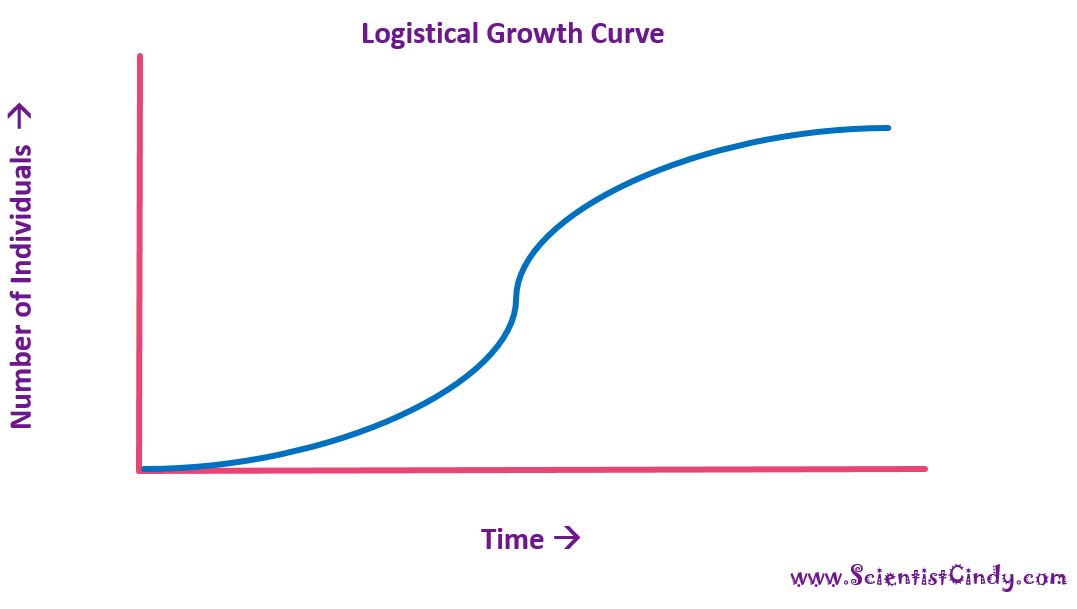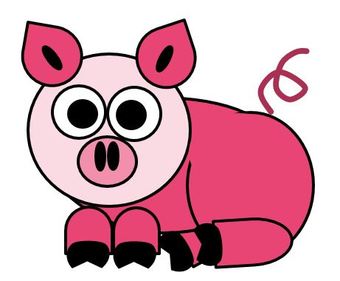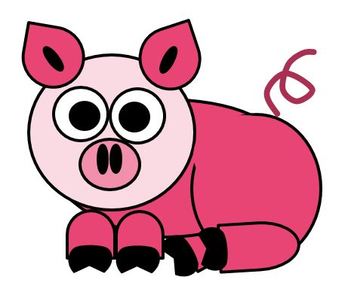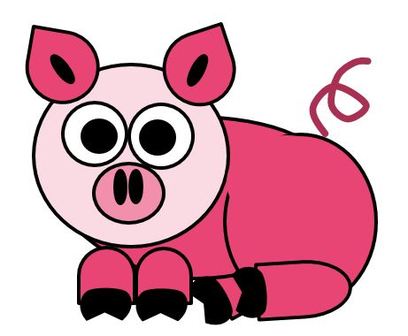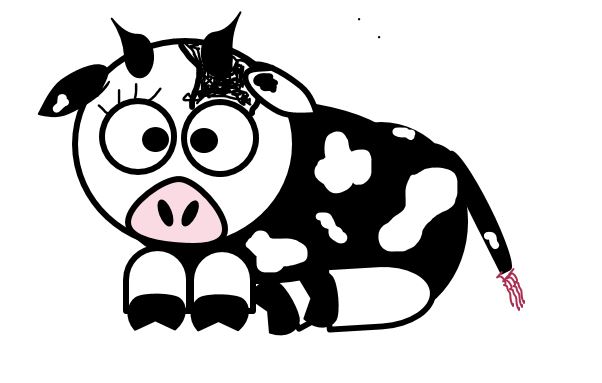COMPETITIO
Competition Tutorial - CLICK ON THE SLIDE SHOW TO CONTROL!
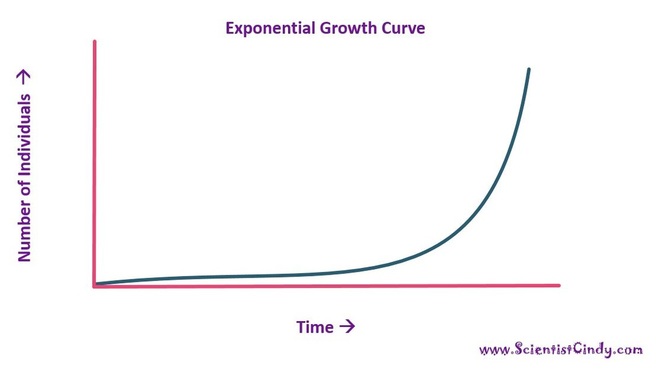
Generally, larger organisms have fewer offspring and give more care to those offspring. On the other hand, microorganisms (like bacteria) have the greatest intrinsic rates of increase. Under ideal conditions (that is, an environment with unlimited resources), certain bacteria reproduce by dividing in half every 30 minutes. A single bacterium would increase to a population of more than 1 million in just 10 hours and the population from a single individual would exceed 1 billion in 15 hours! This is a great example of exponential population growth.
exponential population growth
If you plot the population number versus time, the graph has a J shape characteristic of exponential population growth (Figure 5.5b). When a population grows exponentially, the larger the population gets, the faster it grows.
- Carrying Capacity
- Some populations under the right conditions may exhibit exponential population growth for a short period.
- BUT there is a limit to how many organisms that ecosystem can support! This limit is called the CARRYING CAPACITY.
- As the population increases, unfavorable environmental conditions rise.
- limited availability of food, water, shelter, and other essential resources (resulting in increased competition), as well as limits imposed by disease and predation.
- Factors that Limit Population Growth
- Populations usually stop reproducing when they run out of food and space.
- Pollution from poisonous body wastes and would accumulate in their vicinity.
- Overcrowding facilitates the spread of infectious organisms such as harmful bacteria and viruses among individuals.
- High population densities increase the likelihood of a predator catching an individual.
- Factors that Limit Population Growth
- As the environment deteriorates,
- Birth rates would decline
- Death rates would increase.
- Number of individuals in that population would decrease.
- Factors that Limit Population Growth
Environmental resistance is an excellent example of a negative feedback mechanism, in which a change in some condition triggers a response that counteracts, or reverses, the changed condition.
- Negative feedback acting on a rapidly growing population can eventually reduce the rate of population growth to nearly zero. This leveling out occurs at or near the carrying capacity (K), the limit of the environment’s ability to support a population.
- A population will grow exponentially UNTIL the environment resists.
- Populations typically grow slowly when their numbers are small, but growth accelerates (to the maximum growth rate) until environmental resistance (limits to food, breeding sites, habitat, etc.) force growth to slow again, leveling off as the population approaches the carrying capacity (K).
- Logistical growth curve (S-shaped)
- carrying capacity (K) The maximum number of individuals of a given species that a particular environment can support for an indefinite period, assuming there are no changes in the environment.
Logistical growth curve (S-shaped)
Natural mechanisms that influence population size fall into two categories:
Disease
Competition
2. density-independent factors
Climate change
- When a population affected by environmental resistance is graphed over a long period the curve has the characteristic S shape of logistic population growth.
- The curve shows an approximate exponential increase initially (note the curve’s J shape at the start, when environmental resistance is low).
- The peak growth rate that occurs when the population is at half the carrying capacity, followed by a leveling out as the carrying capacity of the environment is approached.
- In logistic population growth, the rate of population growth is proportional to the amount of existing resources, and competition leads to limited population growth.
Natural mechanisms that influence population size fall into two categories:
- density-dependent factors
Disease
Competition
2. density-independent factors
Climate change
intraspecific - interactions that occur between individuals of the same species
interspecific - interactions that occur between two or more species
Interactions between two individuals can be defined as either
Competition is an interaction of individuals wanting the same resource(s). It is usually a common resource that is in limited supply.
Competition may not be so obvious in some cases. It can also be defined more broadly as the direct or indirect interaction of organisms that leads to a change in fitness when the organisms share the same resource.
There are 2 major forms of competition.
- intraspecific - interactions that occur between individuals of the same species
- interspecific - interactions that occur between two or more species
Competition is an interaction of individuals wanting the same resource(s). It is usually a common resource that is in limited supply.
Competition may not be so obvious in some cases. It can also be defined more broadly as the direct or indirect interaction of organisms that leads to a change in fitness when the organisms share the same resource.
There are 2 major forms of competition.
- interference competition
- exploitation competition
- Interference competition occurs directly between individuals
Interference Competition
Competitive Exclusion
What is competitive exclusion?
There are 2 possible outcomes of competition.
- Exploitation competition
- Apparent competition
Interference Competition
- We observe interference competition when individuals interact directly by fighting for resources.
- For example, when a male gorilla prohibits other males from accessing a mate by using physical aggression or displays of aggression, the dominant male is directly altering the mating behavior of other males.
- Exploitation competition is when individuals utilize the same resource(s) in a given area. In this interaction, they are not confronting one another with aggression.
- The use of the resource by one individual will decrease the amount available for other individuals.
Competitive Exclusion
What is competitive exclusion?
- Over time a superior competitor can OUT COMPETE an inferior competitor from an area.
- The better competitor takes over the area and the resources and the loser must find other territory or resources or go extinct.
- This phenomenon is called competitive exclusion.
- Competition does not always have to lead to competitive exclusion!
There are 2 possible outcomes of competition.
- Competitive exclusion - One species takes over the territory and resources and excludes the other.
- Resource Partitioning - Allocates one set of resources in an area to one species and another set of resources to the other species.
| competition.pdf | |
| File Size: | 1808 kb |
| File Type: | |

